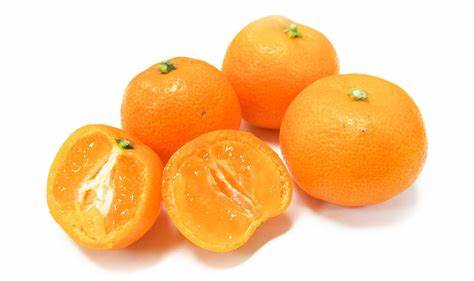Categories
Other Pages
- Age on other Planets
- Aliens
- American Flag
- Annuals
- Avoiding Scams
- Awareness Ribbons
- Baileys Liqueur
- Bananas
- Banana Tree, Grand Nain
- Banana Tree, Ice Cream
- Banana Tree, Zebrina Rojo
- Beekeeping
- Bleach
- Boogaloo
- Bookmarks
- Bullying
- Cats
- Chillicothe Businesses
- Christmas Tree
- Ciroc Vodka
- Coffee Pods
- Color Codes Chart
- Consumer Resources
- Consumer Resources - Elders
- Credit Score Checkers
- Credit Scores
- Death Checklist
- Disaronno Amaretto
- Donation
- Drug Test
- Eye Teasers
- Fonts
- Foods To Regrow
- Friend
- Funny Things
- Fun Stuff
- Giving
- Growing Blueberries
- Halloween
- Halloween Treats
- Hello!!
- Home Bar
- House Plants
- Hunger Facts
- Interesting Facts
- Kinds of Tea
- Lucky Bamboo
- Macaroni!!
- Missouri
- Missouri Prisons
- National Foundations
- Never Forget
- New Page Soon
- One Little Rose
- Orchid Growing
- Orchid Sources
- PayPal.Me
- Perennials
- Phobias A-Z
- Plant Care
- Plant Zone Map
- Propagating Plants
- Ragtime Music
- Recipes I like
- Roses
- Sadie & Beethoven
- Scam Calls
- Smile
- Speed Test
- Spices You Need
- Spices I Have
- State Trees
- Superstitions
- Symbols
- Tequila Rose
- The Ten Commandments
- Top Alcohol
- Top Animated Movies
- Top Comedy Movies
- Top Expensive Movies
- Toyota Yaris 2008
- Toyota Yaris 2012
- Tree, Calamondin Orange
- Tree, Meyer Lemon
- Tree, Persian Lime
- US Bill of Rights
- US Constitution
- US Declaration of Independence
- UV Vodka
- Weight on other Planets
- Wine Clubs
- Wines
- Wines - Missouri
Needed to read PDF's
Calamondin Orange
(Calamansi)
X Citrofortunella Microcarpa, Citrus Mitis, Panama Orange

What is a Calamondin Tree
The Calamondin (Calamansi ) tree is a cross between a tangerine and a kumquat, and produces a small, thin-skinned, tart citrus fruit that is great to eat out of hand, or for use as juice, in salads, and for cooking.
The Calamondin (Calamansi ) tree is a cross between a tangerine and a kumquat, and produces a small, thin-skinned, tart citrus fruit that is great to eat out of hand, or for use as juice, in salads, and for cooking. The fruit is orange, up to two or three inches across, and appears among dark green, glossy foliage.
Calamondins can be grown in the ground in USDA Zones 8 – 11, or in a container on a patio or indoors if you are in USDA Zones 4 – 11. Calamondin Trees reach a size of 6 to 8 feet when grown in the ground in a sunny location and within their ideal growing zones. Container-grown Calamondins grow to about 4 to 6 feet in height.
Calamansi Trees are represent good luck for the Chinese New Year!
If you have tried lemon tree care and with success, you will do great in caring for a Calamondin.
Citrus Calamondin Quick Care Tips
- Botanical Name: Citrus mitis
- Common Name(s): Calamondin, Dwarf Calamondin Tree, Philippine Lime, Calamansi
- Synonyms: Citrus × microcarpa, Citrus × citrofortunella mitis
- Pronunciation: SIT-rus MIT-iss
- Family & Origin: Rutaceae family, native to the Philippines, Indonesia, Malaysia, Brunei, southern China, and Taiwan.
- Growability: Easy to grow
- Grow Zone:Oudoors: 9-11, Indoors: 2-11
- Size: Grows up 4′ feet tall in containers, 20′ feet tall in its native environment
- Flowering: Produces fragrant white flowers followed by small orange fruits all year-round.
- Light: Needs bright light with four hours of direct sunlight daily
- Humidity: Prefers moderate humidity levels, around 40% to 50%
- Temperature: Thrives in warm temperatures between 70° – 90° degrees Fahrenheit
- Soil: Well-draining soil
- Water: Water regularly, keeping the soil moist but not waterlogged
- Fertilizer: Fertilize with a full-strength water-soluble citrus fertilizer during its growing season
- Pests & Diseases: Susceptible to scale insects, spider mites, and aphids. Can also be affected by gummosis, citrus canker, and citrus scab.
- Propagation: Can be propagated through seed or cuttings
- Plant Uses: Used for ornamental purposes, as well as for its edible fruit and juice. Can also be used in cooking and baking.
Restrictions *Due to state restrictions they cannot be shipped to the following:
Alaska, California, Arizona, Hawaii, Texas, Louisiana, Guam, Puerto Rico
Nutrition Facts
Calamansi is packed with a variety of essential nutrients that contribute to its impressive health benefits. Let's take a closer look at the nutritional composition of this amazing fruit:
| Nutrient | Amount per 100g |
| Calories | 26 |
| Carbohydrates | 7g |
| Fiber | 2g |
| Protein | 1g |
| Vitamin C | 46mg |
| Vitamin B1 (Thiamine) | 0.03mg |
| Vitamin B2 (Riboflavin) | 0.03mg |
| Vitamin B3 (Niacin) | 0.2mg |
| Calcium | 20mg |
| Phosphorus | 18mg |
| Iron | 0.3mg |
| Magnesium | 8mg |
| Potassium | 114mg |
Where Does Calamondin Come From
The orange tree is cold-hardy and a hybrid between a kumquat and mandarin orange. The tree comes from China and is cultivated throughout Asia, India, Malaysia, and the Philippines.
Sometimes gardeners call the orange tree a Citrus mitis or Citrus x citrofortunella mitis. But the common name is Calamansi or Calamondin.
As an indoor fruit tree, the Calamondin is one of the best to grow. You can develop the plant from cuttings or seeds.
When the perennial shrub blooms, you get a lot of star-shaped flowers and small orange fruit when taken care of properly. You can also expect your Calamondin trees to bear fruit in the second year.
The flowers are white in appearance and followed by fruit. As the fruit ripens, it changes from a deep green to an orange.
The best part is that you need not pick the fruit and leave them there. You can replace your lemon or use the fruit in marmalade, iced tea, and chiffon pie.
Caring For Calamondin Trees
Size and Growth
Calamondin Orange Tree can grow to be 20′ feet high in its native tropical environment.
When kept as a container plant, it will usually top out at about 4′ feet high.
Calamansi leaves are oval-shaped, shiny, and deep green.
Calamondin Citrus Trees Flowering and Fragrance
Calamondin Trees can bloom white flowers and set fruit all year round. You may see both fruit and flowers on your tree simultaneously.
If you keep your Calamondin tree indoors, to produce fruit, you will need to hand pollinate the flowers.
How Do You Pollinate Calamondin?
- To hand pollinate, you will need a small, dry artist’s paintbrush.
- Wiggle the tip of the brush in the center of each of the flowers
- Move along like a honey bee from one flower to the next.
The white, star-shaped flowers are very attractive and fragrant.
The fruits on this mini orange plant are small, orange, and easy to peel.
If you plan to pick them to use, clip them off cleanly with sharp scissors.
Be sure to use them promptly. They spoil within a week.
The fruits are usually too sour to eat.
They can be used like lemons or limes to garnish drinks, make beverages and marmalade or squeeze over fish or other dishes that do well with a sour zest.
Light and Temperature
The Calamondin tree, like other citrus plants, likes lots of bright light.
When kept as a houseplant, your dwarf orange tree should receive a minimum of four hours of direct sunlight daily.
Remember to turn the plant a quarter turn every week to prevent it from growing lopsided as it reaches for the sun.
When the weather warms up, give your Calamansi an outdoor vacation.
These shrubs typically like temperatures ranging from 70° – 90° degrees Fahrenheit.
They do not thrive in temperatures below 55° degrees Fahrenheit, but they can survive temperatures as low as 20° degrees Fahrenheit.
Calamondin is winter hardy in USDA hardiness zones 9b and above.
Below the 55-degree mark (Fahrenheit), the plants could begin to go dormant.
When the weather breaks and your calamondin orange tree can move outdoors into higher light intensities – do it gradually. In at night, out during the day. For about a month.
Also, remember that indoors any additional light and extra humidity you can provide will be helpful.
Citruses, like the orange and indoor lemon tree, have been grown throughout Europe in containers for centuries.
In the US, we don’t think much about citrus as indoor house plants. However, they make excellent indoor houseplants.
Just know the proper Calamondin tree care, and you should enjoy citrus fruits and their juices soon.
How Often Do You Water & Feed A Tree Calamondin?
Calamondin Orange is fairly drought tolerant. Water only as needed because overwatering will kill your tree. Let the top inch of soil dry out, and then water thoroughly.
If you want to force your citrus shrub to bloom, withhold water until the leaves wilt and roll up.
Water thoroughly, and your plant should bloom within a couple of months.
Moreover, it would require moderate humidity levels, around 40% to 50%.
In the springtime, feed your dwarf orange a slow-release fertilizer.
Throughout the growing season, fertilize monthly using a full-strength water-soluble citrus fertilizer.
In the wintertime, dilute the fertilizer to half strength and provide it every fifth week.
In the watering department, soak the rootball and root system thoroughly until water drains out the bottom.
Don’t water again until the top quarter of the soil dries out.
Also, Calamondin plants do best in well-drained soil.
Related: Fertilizing Citrus Trees
Soil and Transplanting
Citrus mitis thrives in well-draining soil. But small citrus shrubs also do well as container plants.
However, you must be vigilant about repotting because it is easy for their root system to grow and plants to become outbound.
Provide a large container with plenty of room for root growth.
Use a mixture of equal parts:
- Potting Soil
- Organic Compost
- Vermiculite or Perlite
Check at the end of every winter to see if your Calamansi is becoming outbound.
Repot every two or three years in the springtime.
Citrus Fruit Rules to Remember
Use a potting soil mix designed for potted plants and not soil from the garden. Make sure the pot has drainage holes.
We think of citrus growing in the ground. Don’t assume the same soil could be used in a pot.
Grooming and Maintenance
Calamondin Orange Trees only need light and occasional pruning to remove diseased, damaged, or dead branches.
When spurs and water sprouts appear at the base of the trunk, pinch or prune them back.
How To Propagate Calamondin Tree?
You can grow Calamondin easily from seeds or root softwood cutting in the springtime. You can also use semi-ripe cuttings during the summertime.
NOTE: Years ago, I remember cuttings of Calamondin plants being rooted in large mist houses where they were grown commercially.
- Use a very sharp, very clean razor blade or knife to take a stem cutting
- Look for cuttings about four inches long at the end of the stem.
- It should have two or three leaf nodes and no flowers/fruit.
- Dip the cutting into a hormone-rooting powder.
- Insert the cutting into a small pot of prepared potting mix (as described above).
- Put the pot and cutting into a clear plastic bag or soda bottle greenhouse to retain moisture.
- Place in bright indirect lighting
- Your stem cutting should set roots within a couple of months.
It’s also possible to do a bud graft on sour orange rootstock.
Calamondin Tree Pests or Disease Problems
Keep the plants’ leaves clean by wiping them regularly with a damp sponge.
This will help keep the dust down and prevents infestation by scale insects, aphids, and mites.
It’s also prone to diseases like gummosis, citrus canker, and citrus scab.
IMPORTANT NOTE: If you plan on eating Calamondin fruit, be careful what you spray on them. When possible, go with a natural organic insecticide for control, like Neem Oil.
Is the Calamondin Considered Toxic or Poisonous to Pets?
Like all citrus plants, Calamondin Orange produces three substances that are toxic to dogs:
- Psoralens
- Linalool
- Limonene
These are all safe for humans, but you should keep your dog away from this tree.
Everblooming Citrus Trees and Plant Varieties:
- CALAMONDIN LIMES are the most tender of the citrus and usually quite thorny. Difficult to grow in the ground; much better suited to containers. Protect at 32° degrees Fahrenheit; watch wind chill carefully.
- CALAMONDINS is a beautiful, cold-tolerant ornamental tree with small, sour orange fruit. Grown more for looks than fruit. Great patio plant or clipped hedge. These will probably be the easiest of all to find at your nursery. Hardy to 20° degrees Fahrenheit.
- LEMONS are the fastest-growing citrus and very easy to grow in containers. Most are frost-tender and should be covered or brought inside when temperatures reach 30° degrees Fahrenheit. Varieties available here are usually ever-bearing.
- KUMQUAT is a heavy producer of small orange fruit that can be eaten, peeled, and all. An excellent container plant and extremely ornamental, this tree tolerates cold better than any other citrus. Hardy to 18° degrees Fahrenheit.
se varieties will most likely set fruit indoors in the winter. Other citrus varieties will grow and flower, but don’t expect much in the way of fruit.
Citrus mitis Calamondin also provides natural anti-inflammatory benefits just like any other citrus plant.
The juice also has a number of personal care, and folk medicine uses.
Why not give the miniature orange a try?
FAQ's
Can you eat the skin of a Calamondin?
The skin of a Calamondin is indeed edible. Much like a kumquat, the skin can be sweeter, while the flesh can be more tart. Oils from the skin lend a balanced sweetness to the tangy juice when calamondins are squeezed for their juice. The skin can also be used as zest, in marmalades, or as an ingredient in chutney or other dishes and desserts.
How long will harvested Calamondins last?
Once you pick Calamondins, they will remain in fine condition for a few days and up to a week at room temperature. You can prolong their shelf life by refrigerating them. You can also squeeze and freeze the juice for later use in recipes and beverages.
Is the Calamondin tree a good choice to grow in a pot?
Yes. The small size of the Calamondin tree, and the smaller sized fruit it produces, make it a perfect candidate for growing in a container. If you are in a colder area, you can even grow the Calamondin Tree in a pot indoors, as long as you give it plenty of light and adequate water.
Does the Calamondin Tree need a pollinator to grow fruit?
No. The Calamondin Tree is self-fertile and does not require a second pollinator tree to produce fruit. Calamondin trees grown in the proximity of a second viable pollinating tree, however, may produce even more fruit. To maximize yields, you could grow your Calamondin Tree with a Kumquat, tangerine, or another Calamondin, but this is not needed in order for your tree to grow fruit.
Find me on Social Media
 |
Don't forget to bookmark me to see updates.. Copyright © 2000 - 2025 - K. Kerr Most recent revision November 19, 2025 07:05:35 AM
|











